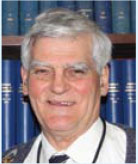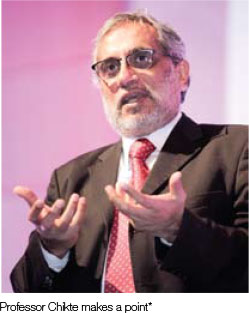Serviços Personalizados
Artigo
Indicadores
Links relacionados
-
 Citado por Google
Citado por Google -
 Similares em Google
Similares em Google
Compartilhar
South African Dental Journal
versão On-line ISSN 0375-1562
versão impressa ISSN 0011-8516
S. Afr. dent. j. vol.69 no.8 Johannesburg 2014
EDITORIAL
Research: Capricious or Controlled?
WG Evans
Managing Editor. E-mail: bill.evans@wits.ac.za

Hans Selye (1907 - 1982) remarked "The element of chance in basic research is overrated. Chance is a lady who smiles only on those who know how to make her smile.11
Whilst Werner von Braun (1912 - 1977) rather more coyly observed : "Research is what I do when I do not know what I am doing."
I am not perplexed by the apparent confusion expressed between these two seminal researchers,,, one reached for the sky, the other sought refuge from stress. For both, research was a life of excitement and opportunity, realised through the medium of extremely hard work and dedication. It is just those characteristics which the recent highly successful DentSply/SADA Student Clinicians programme sought to vitalise amongst our aspirant junior colleagues. As the future unfolds and these young enthusiasts have the chance to develop their investigative skills, there is hope that we shall welcome their contributions to these pages.
What a burgeoning field is Dental Research, South Africa had the privilege this year of hosting the first Congress of the International Association of Dental Research to be held in Africa. Cape Town was the chosen venue to which researchers from all over the world travelled in June. More than fifty broad topics were scheduled in the programme and congress attendees were challenged for choice amongst the numerous simultaneous sessions, not to mention a vast array of posters. Professor Yusuf Chikte, accoladed as Distinguished Speaker, recognised just how the horizons have spread in his farsighted presentation titled: "Overcoming the disciplinary divide - tackling complexity with a transdisciplinary prism."

It is also revealing to survey the lists of clinical trials currently recorded by the US National Institute of Dental and Craniofacial Research. There is a total of 194 topics ranging from "RCT of Zhi Byed 11 (ZB 11) versus Misoprostol in Tibet" to "The Childrens' Amalgam Trial", The topics may be rather arbitrarily sorted into 29 categories, the most frequent investigations being located under Treatments at 16%, Drug Trials at 13.5%, Diseases at 11% and Pain Control at 12%. The control of pain continues to be a sought after ideal, an intriguing realisation considering that Dentistry lead the way in pain control through the bold use of nitrous oxide by Horace Wells, a dentist, on October 16th in 1846. Many studies grappling with Pain Control also of course involved sponsored drugs and instruments under development. The Imperative to research and to publish is well recognised amongst academics but in the case of the Student Clinicians that imperative was at least at first the simple fact that a research project was prescribed in the curriculum. Imperative became Incentive as these spirited students became entranced with the mystique of research. Congratulations to those students who turned a "had to do" into a "want to do". That is precisely the intention of the Student Clinicians project. Dentsply makes a significant contribution to the future of dental research by this world wide programme. South African Dentistry is appreciative and joins as a full local partner in the endeavour.
Perhaps the incentive to conduct research and to develop new techniques, materials or instruments takes on a different hue when the possibility of actual fiscal rewards arises. The inventor of a Hands Free, Wearable and Fully Automatic Tooth Brush has the patent on offer for one million dollars. The inventor is not in fact a dentist! There are several rival designs including one having an elongated handle with detachable brushes at both ends. The imaginative inventiveness of the listed patents is impressive for we see Preventive Dentistry, Orthodontics, Stem Cells, Diagnostic instrumentation and Endodontics all having new concepts to consider.
Translating research or new instrumentation into clinical application can be a laborious and time consuming process, beset by bureaucracy and administrative hurdles. Dentistry has nevertheless advanced splendidly and is currently riding a wave of development and enhancement engendered by research both basic and applied, generously supported in many cases by Dental Supply houses."
And so the question remains... is research a matter of knowing how to "make Lady Luck smile",,, or is research so random that we "do not know what we are doing"? The answer is probably some of both: there is an essential need for planning, but most researchers hope fervently for the "Eureka Moment", Good wishes to all engaged in the excitement!
* Photograph of Professor Chikte taken by Stephen Williams (stephensphotos@gmail.com) and published with the kind permission of the International Association for Dental Research.













